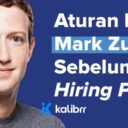How to Survive the Digital Age of Recruitment

Nearly extinct are the days when jobseekers would walk the stretch of Ayala Avenue with a pile of resumes in tow. Today, you will find them indoors and their eyes in front of varying screen sizes. The digital age has not so subtly taken over a good bit of life as we know it and though some entities try to resist this advance, not even the oldest of companies—and their hiring and recruitment—can be immune to it.
TOPICS
Go digital or go home
In the early days, virtual forms of qualifications and information were received to supplement the classic paper resume. Now the entire recruitment process is going digital. “From the résumé to the search to the interview, we’re moving toward a digital hiring model,” said Bob Myhal, director of digital marketing at CBC Advertising and former CEO of NextHire. ”
Résumés will be displaced by constantly evolving representations of individual experiences, skills and aptitudes that exist purely in the digital realm. Innovative tools that use social media, big data and other technologies to give tremendous insight into individual job seekers will [be] the primary screening method.”

Jon Bischke, CEO of Entelo, noted that digital profiles can provide far more insight into a candidate than a traditional résumé can, and many recruiters have realized that. “Twenty years ago, the résumé was a piece of paper,” Bischke said. “Now, it’s a collection of all [candidate] data that can be found online, like participation in online communities, conferences and meet-ups. Recruiters can assess whether a person will fit, and learn if he or she has the right skills for a job.”
Apart from the megabytes of information this provides, the digital age also allows more people, possibly more qualified, outside of your vicinity to be considered and reached. The video interview is quickly replacing the phone interview.
These candidates won’t go down easily
With the workforce being taken over by millennials and Gen Z, there’s a huge shift in the candidate mindset. These kids grew up in the digital age and before they got to experience the “traditional way”of doing things, they were already considered obsolete. Job seekers today, and the infinite access to information, are impatient because they know their worth. They spend less time scrutinizing an opening because it quickly registers whether or not it’s for them. If it is, but the company response rate is low, they move on.

“Talent acquisition has become a seller’s market,” said Laura Kerekes, chief knowledge officer of ThinkHR, a provider of human resources solutions. “For employers, it’s all about maximizing the candidate experience through the job application process.” Kerekes says that the “cardinal sin” of modern recruiting is neglecting the candidate, not making that process fast, easy, or engaging enough.
How can we address this? Tech. Specifically, recruitment marketing technologies. This can be anything from candidate job portals, assessments, and specialty tools that foster sourcing via job boards and employee referral networks. These integrated platforms are more cost-effective and enable the collaborative hiring of top talent employees.
You need them possibly more than they need you. It’s becoming a trend that if a young person cannot find a job, they create one (i.e. a company) and you don’t necessarily want that because it means competition.
Innovation is the new language of recruitment
“To be effective, recruiters are going to need to engage Gen Y [and Z] candidates in new ways,” said Marley Dominguez, CEO of Haystack Job Search, Inc. 75% of new hires weren’t even looking for a job three months prior to employment. These “passive candidates” aren’t really looking for a job but are open to new opportunities. Your SOP for recruitment isn’t going to work on them so it’s the recruiter’s job to find a new way to get their attention and reel them in.
How do we find these passive candidates if they aren’t looking for work? Online. Sift through social networks and any platform where they have online presence. These kids are achieving higher levels of accomplishment at younger ages than we can fathom so when they’re of age, a good bit of them expect employers to seek them out.
Put pride aside, because if we’re talking about the next Mark Zuckerberg in the making, you will be on your recruitment knees trying to get them to sign on. But we have to take social network searching to yet another level digital recruitment. Why? Because manually sifting through these online profiles distracts you from your original goal: hiring someone. How then do we mesh the two together?
Tech is the name of the game
“We expect that the next trend will be not just sourcing social and mobile recruiting data, but actually applying intelligence to summarizing the important information,” said Dominguez. ”
Cloud-based hiring tools will allow recruiters and hiring managers to easily and affordably find, evaluate and organize top job candidates, while innovative assessment and filtering techniques will help provide a 360-degree holistic view of top applicants,” says Bob Myhal, director of digital marketing at CBC Advertising and former CEO of NextHire. ”
Through biometric data, companies will better predict which candidates are most likely to be a good fit for a position, and which are not.”

These advances in data analytics, if applied, can even help recruiters target which demographics—which passive candidates—are best to approach. “One of the ways big data is impacting recruiting is around using social data to identify people who are more likely to be open to new opportunities,” Bischke said. “[Tools can use] people’s online public footprint to help predict when they might be ready to leave an employer and seek a new job.”
This is not to say that just because we live and work in the digital age that everything can be automated. These tools will never fully substitute the human instinct necessary for identifying the right candidates, however, being in tune with technological trends could be a recruiter’s biggest advantage going forward. In the meantime, there’s Kalibrr.
Sign up on Kalibrr and start hiring better today! You can also follow us on Facebook for more business and recruiter advice.






No comment available yet!